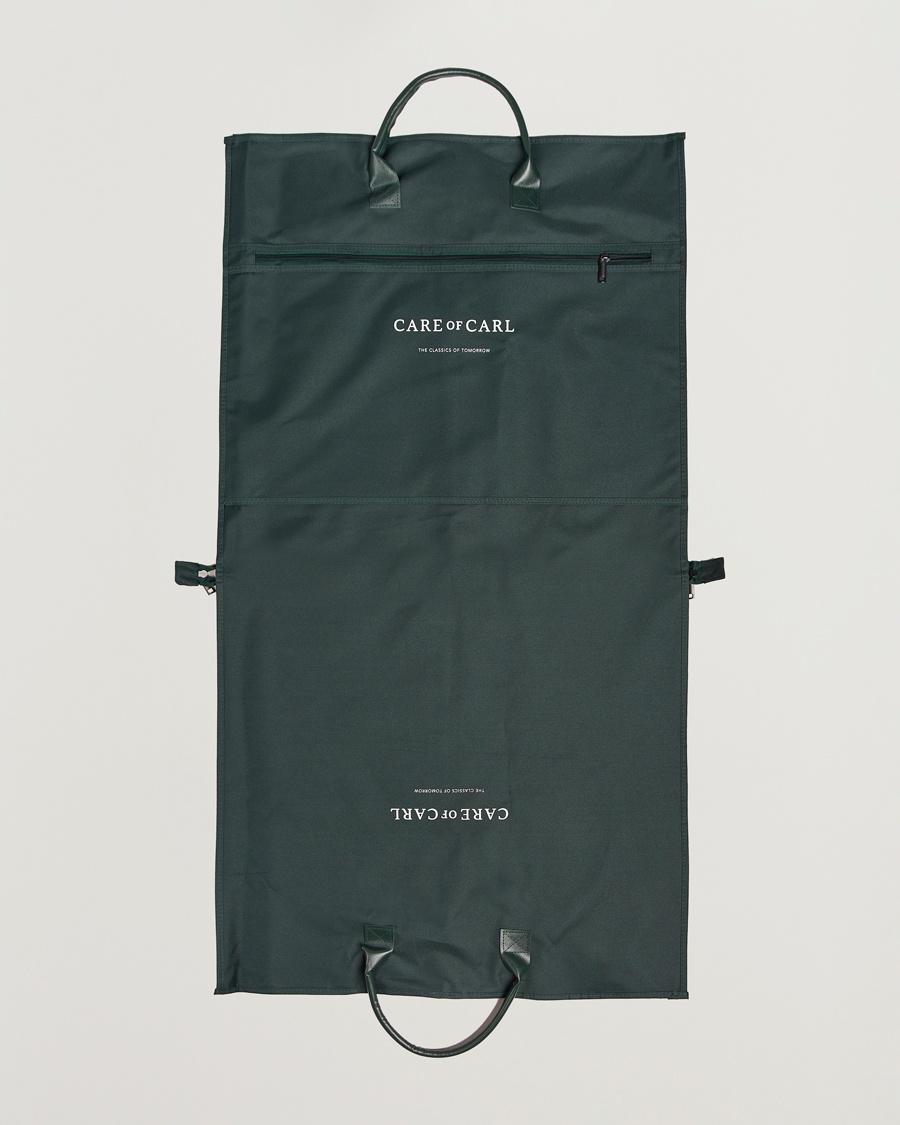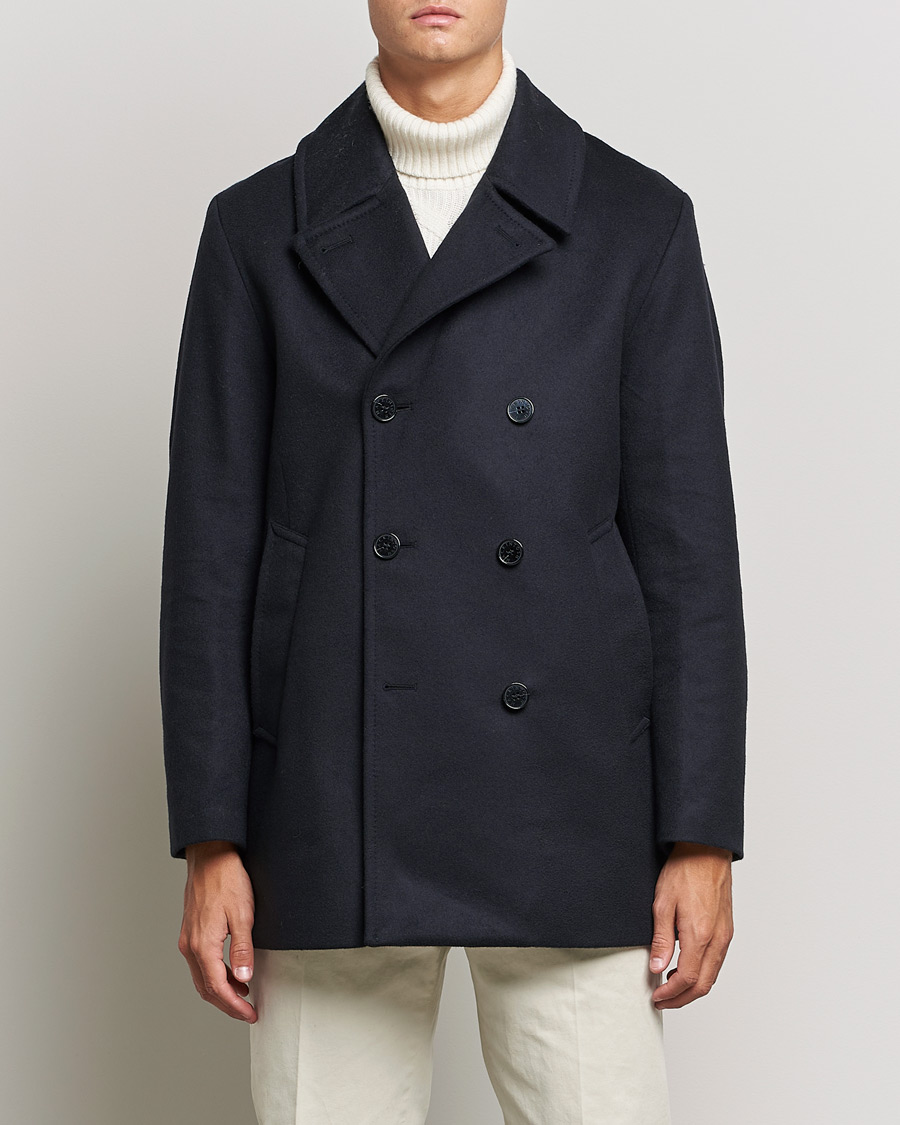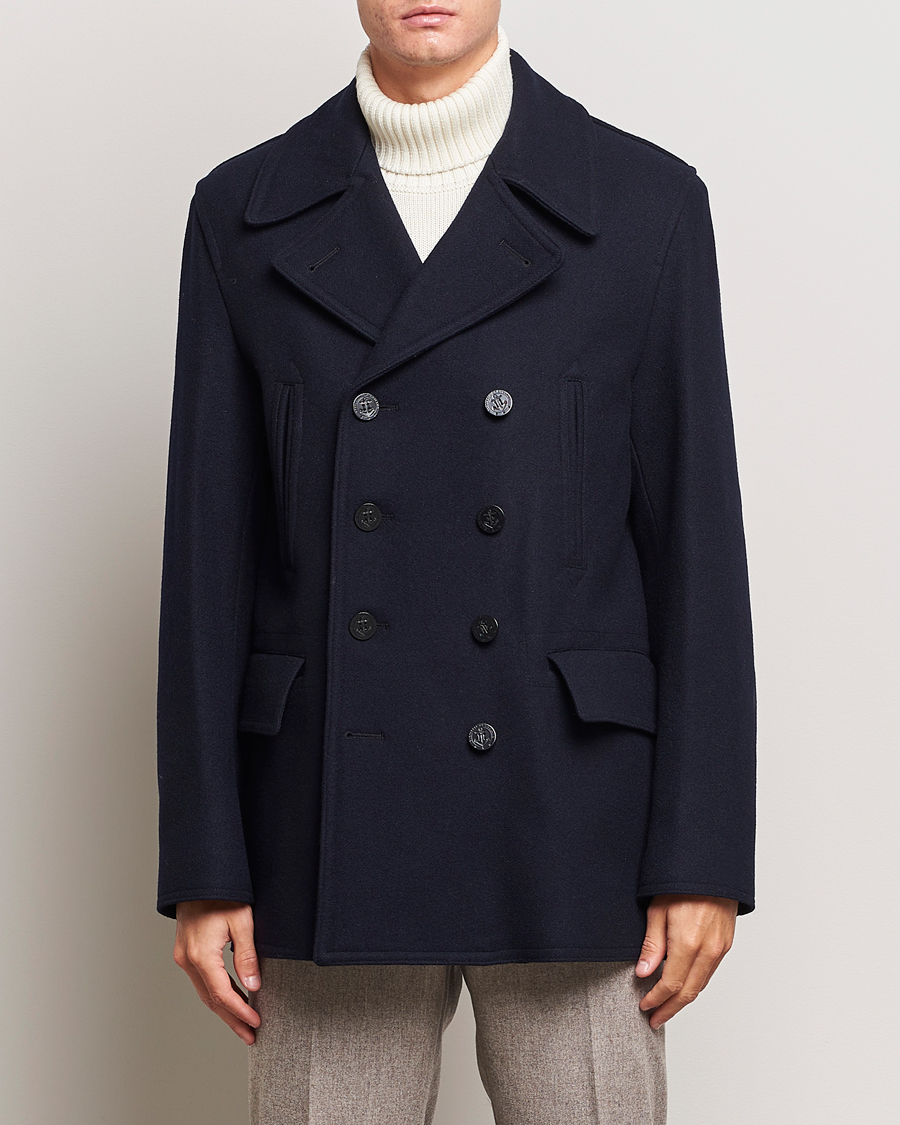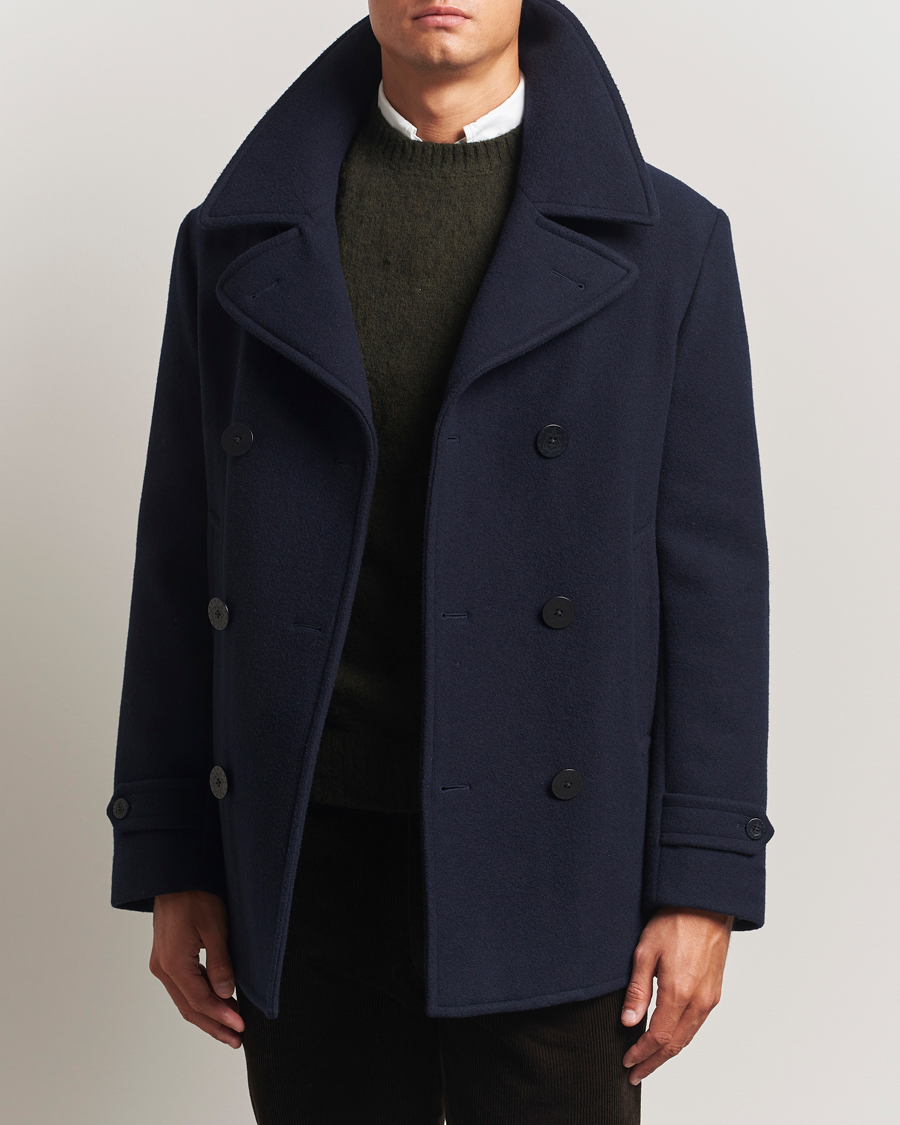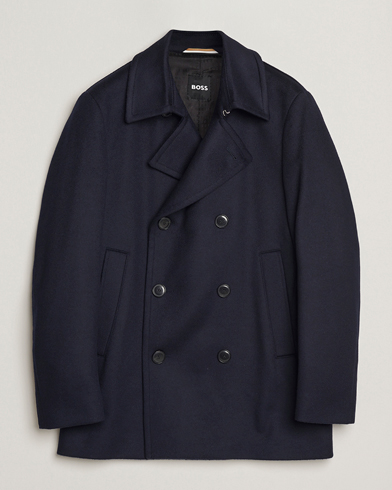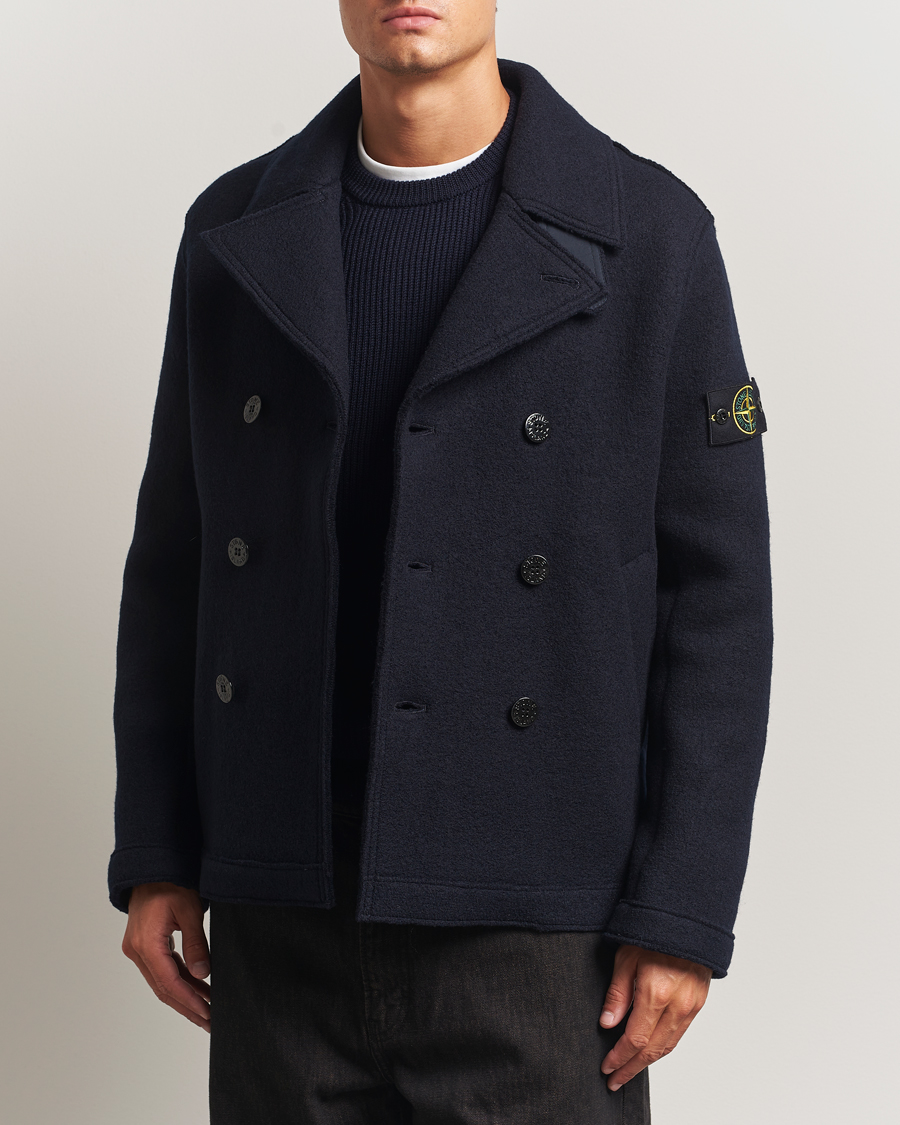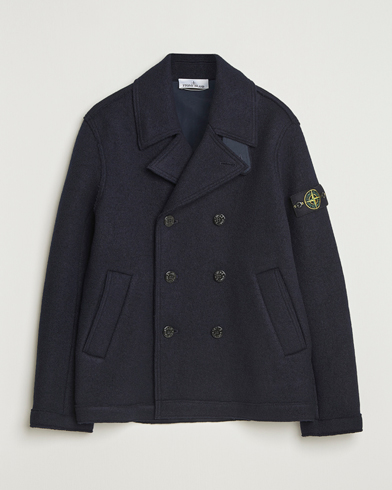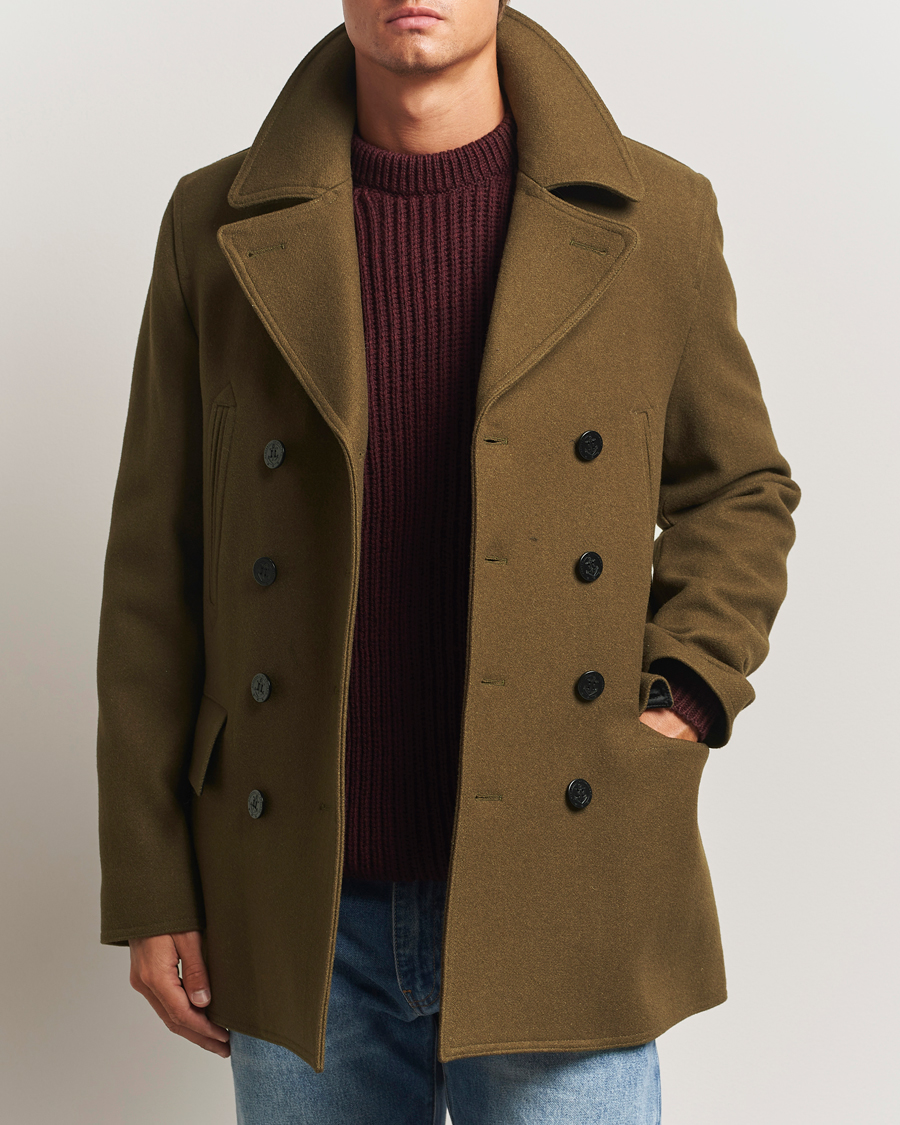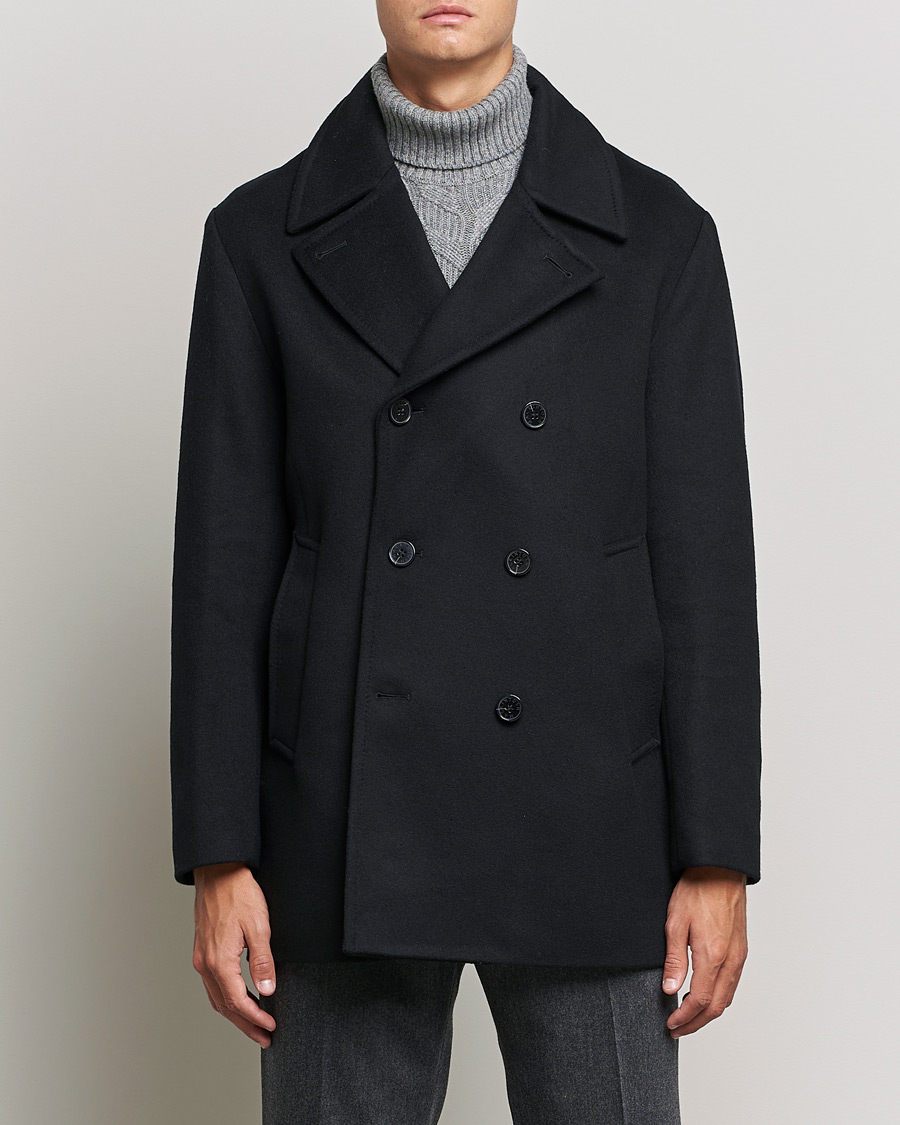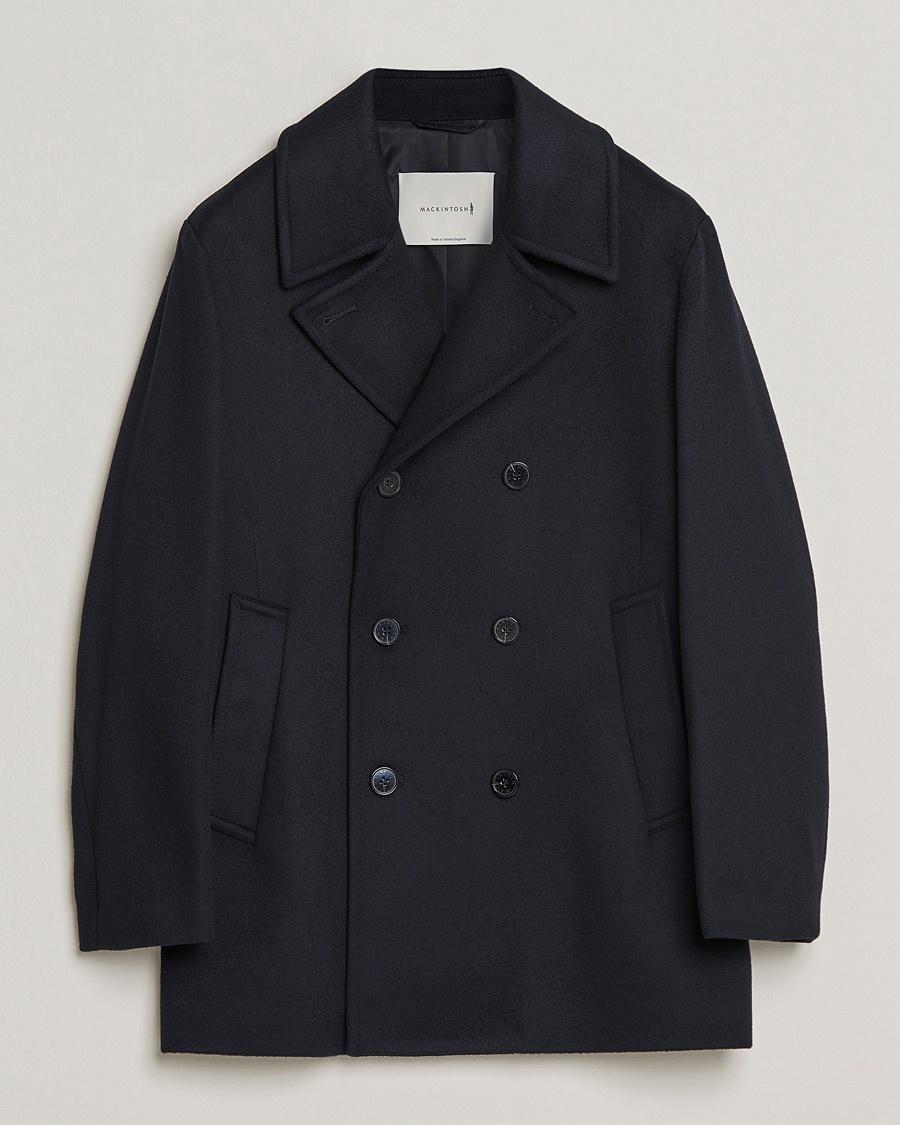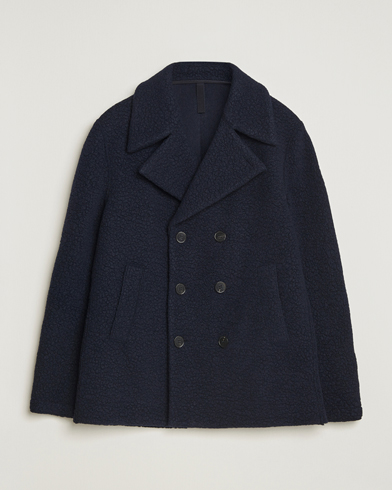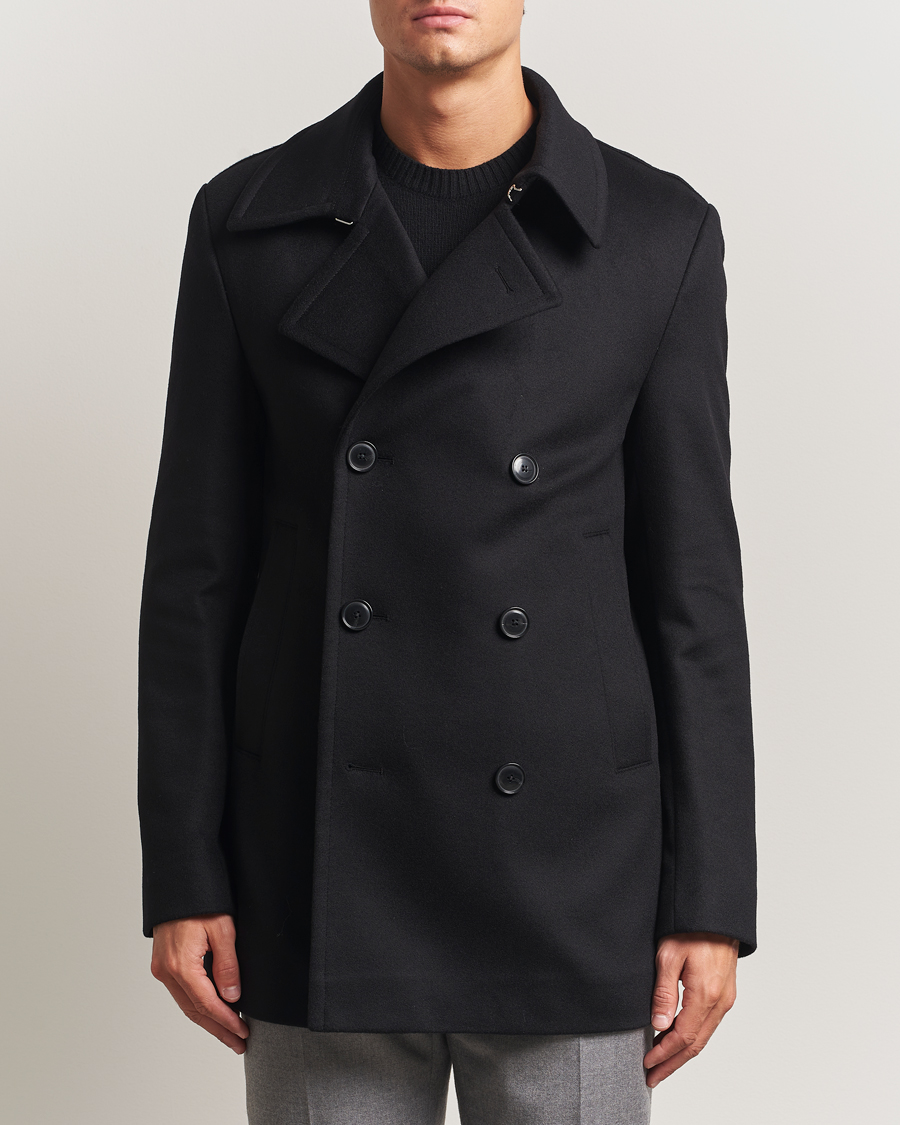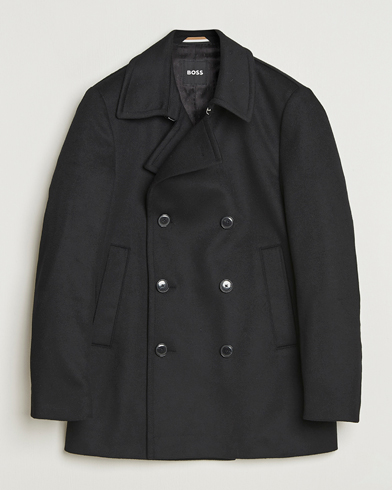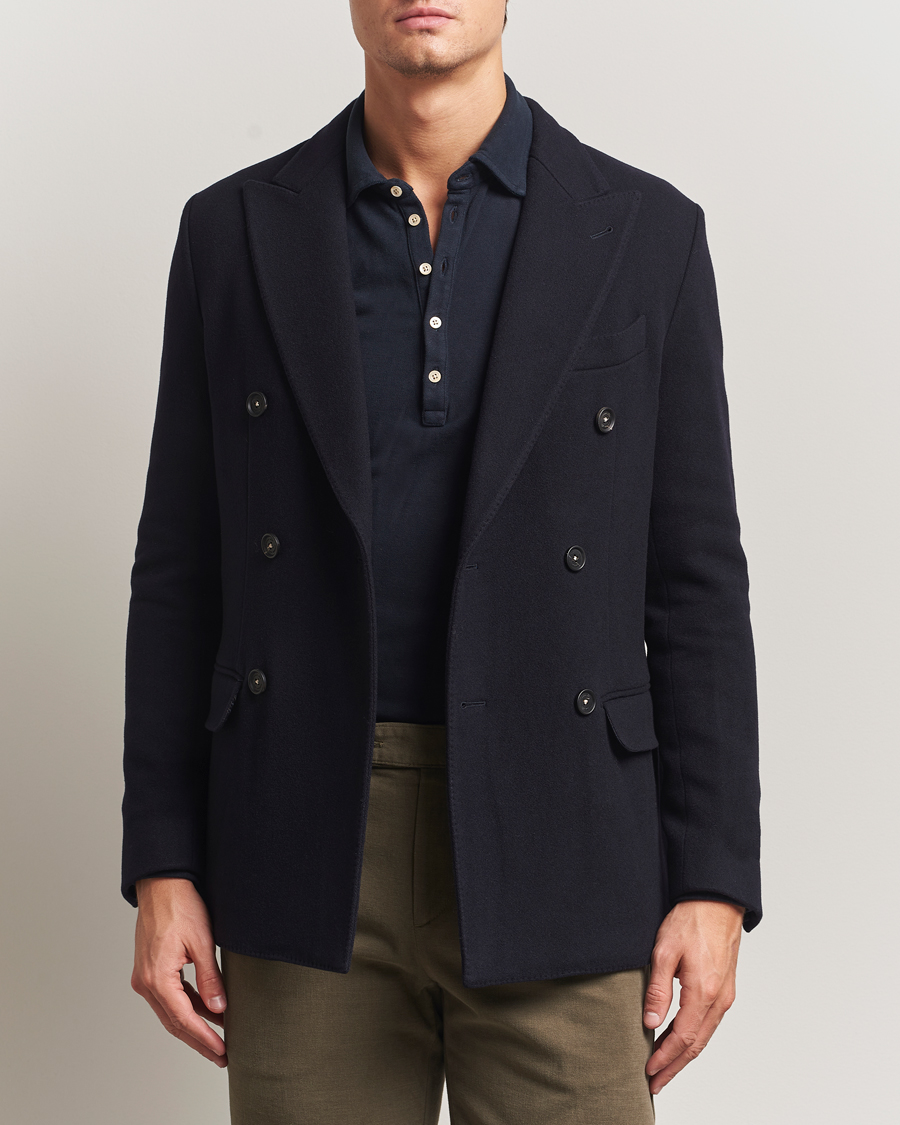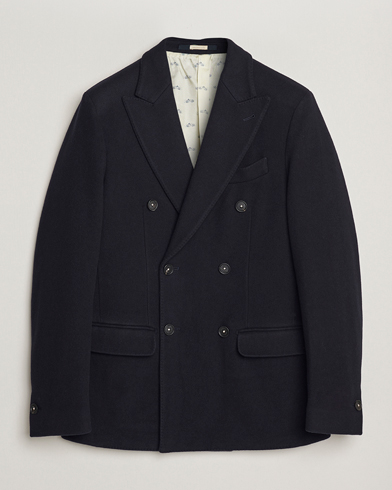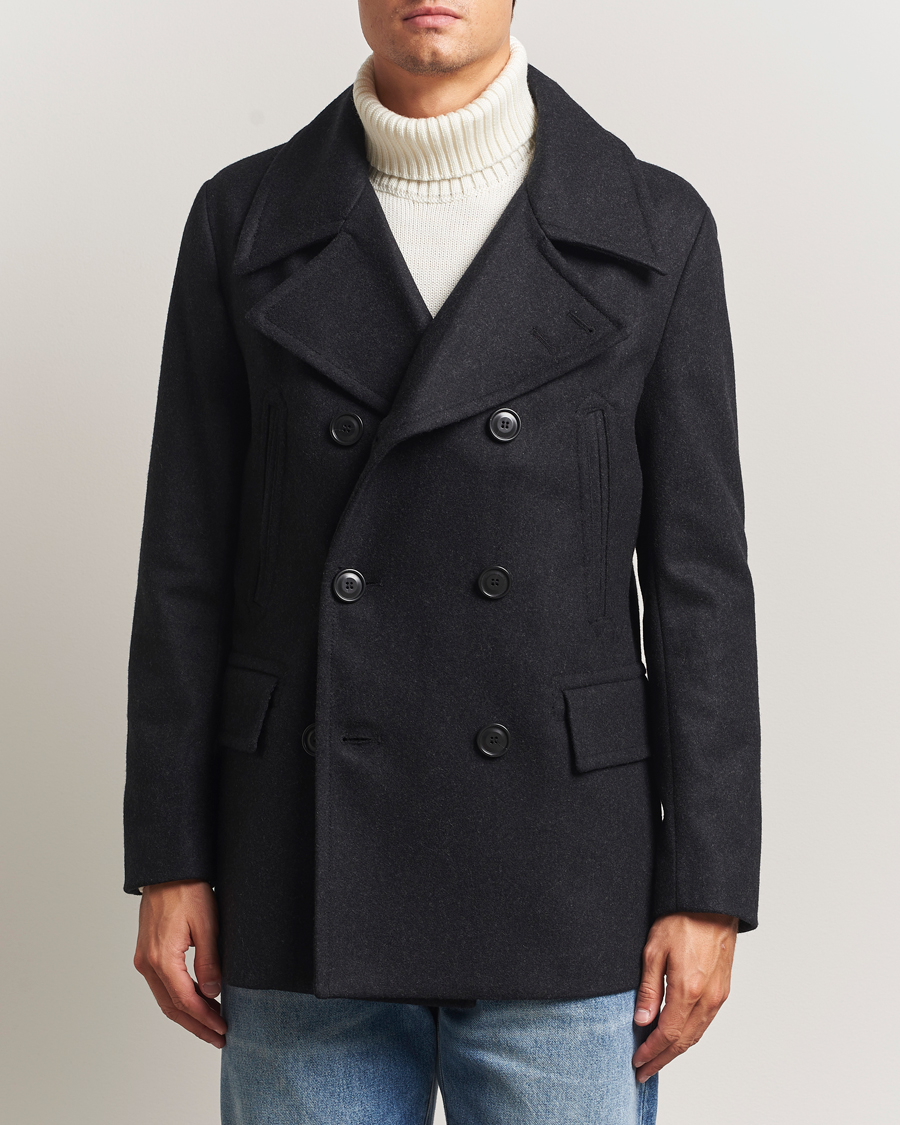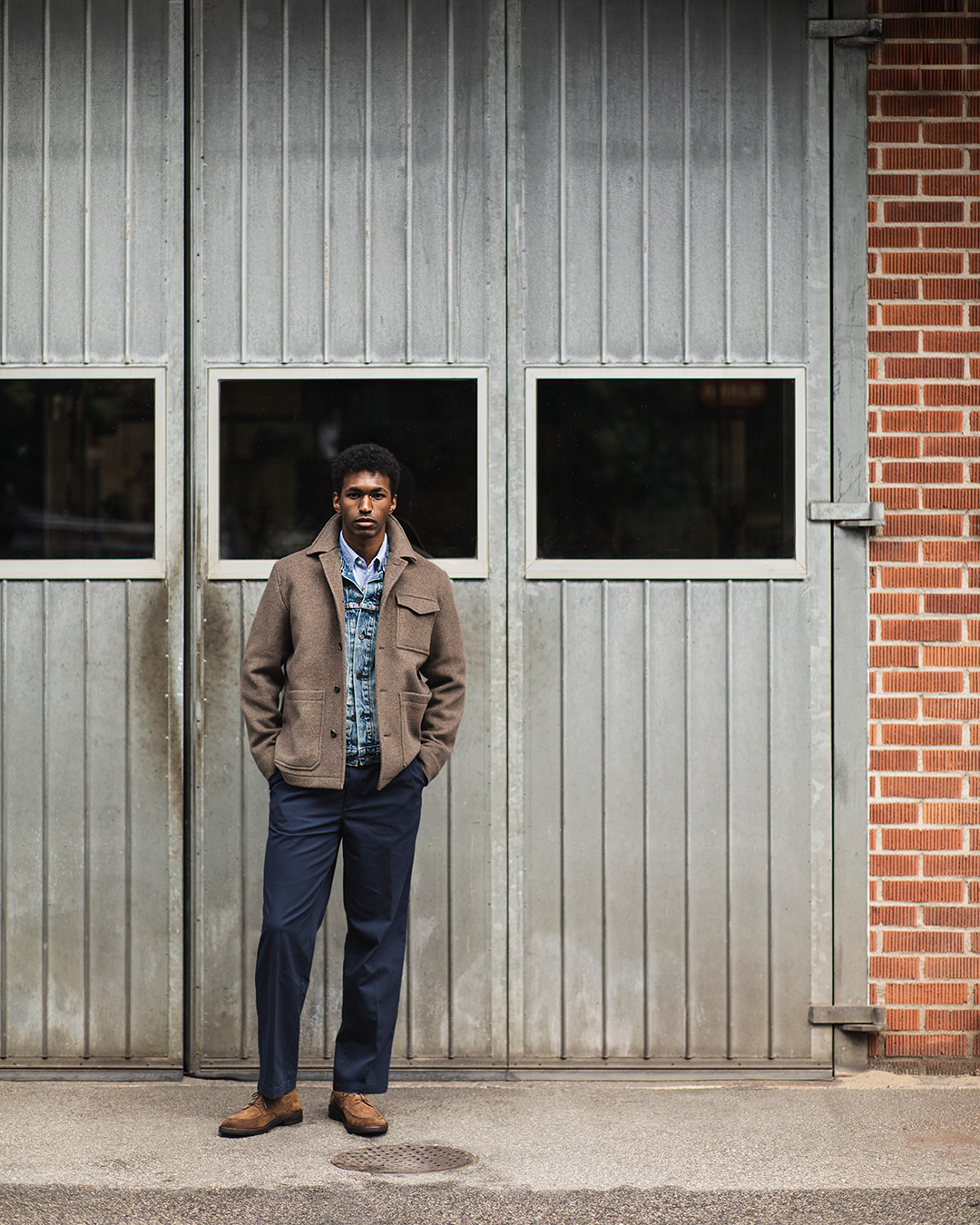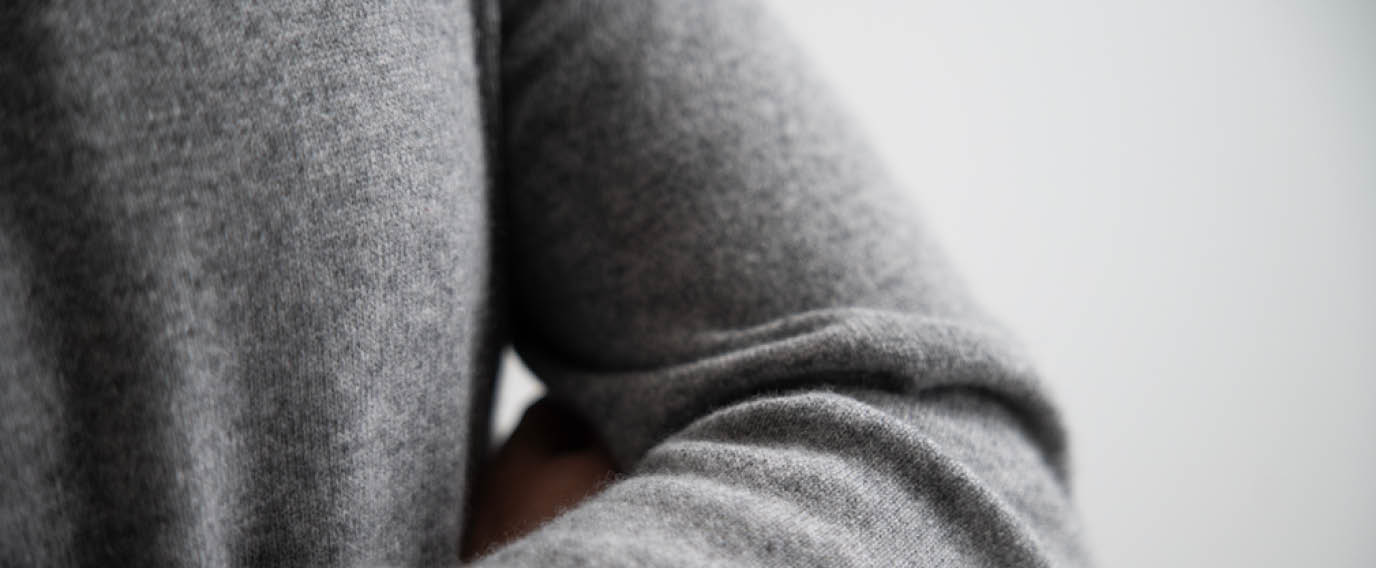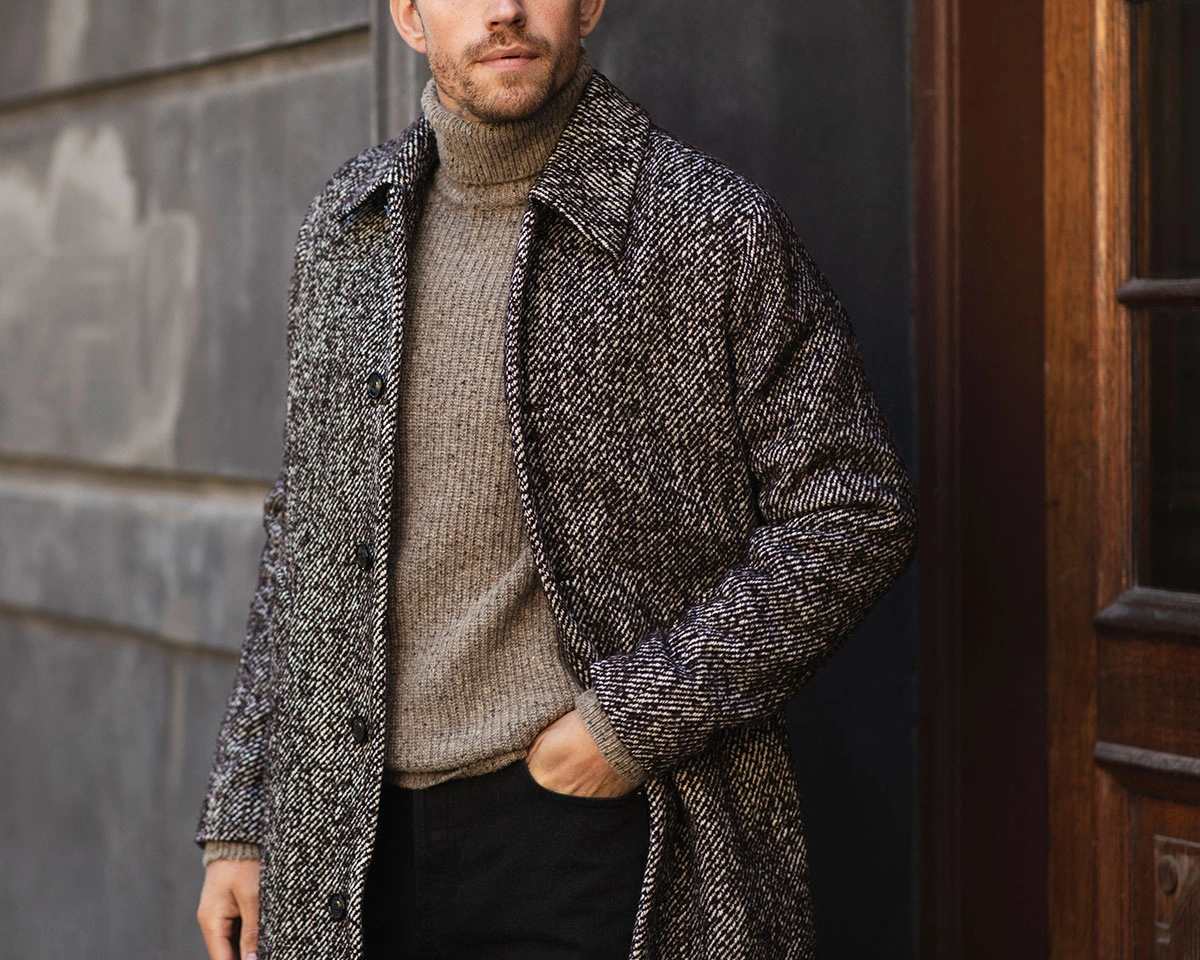Five reasons to invest in a peacoat
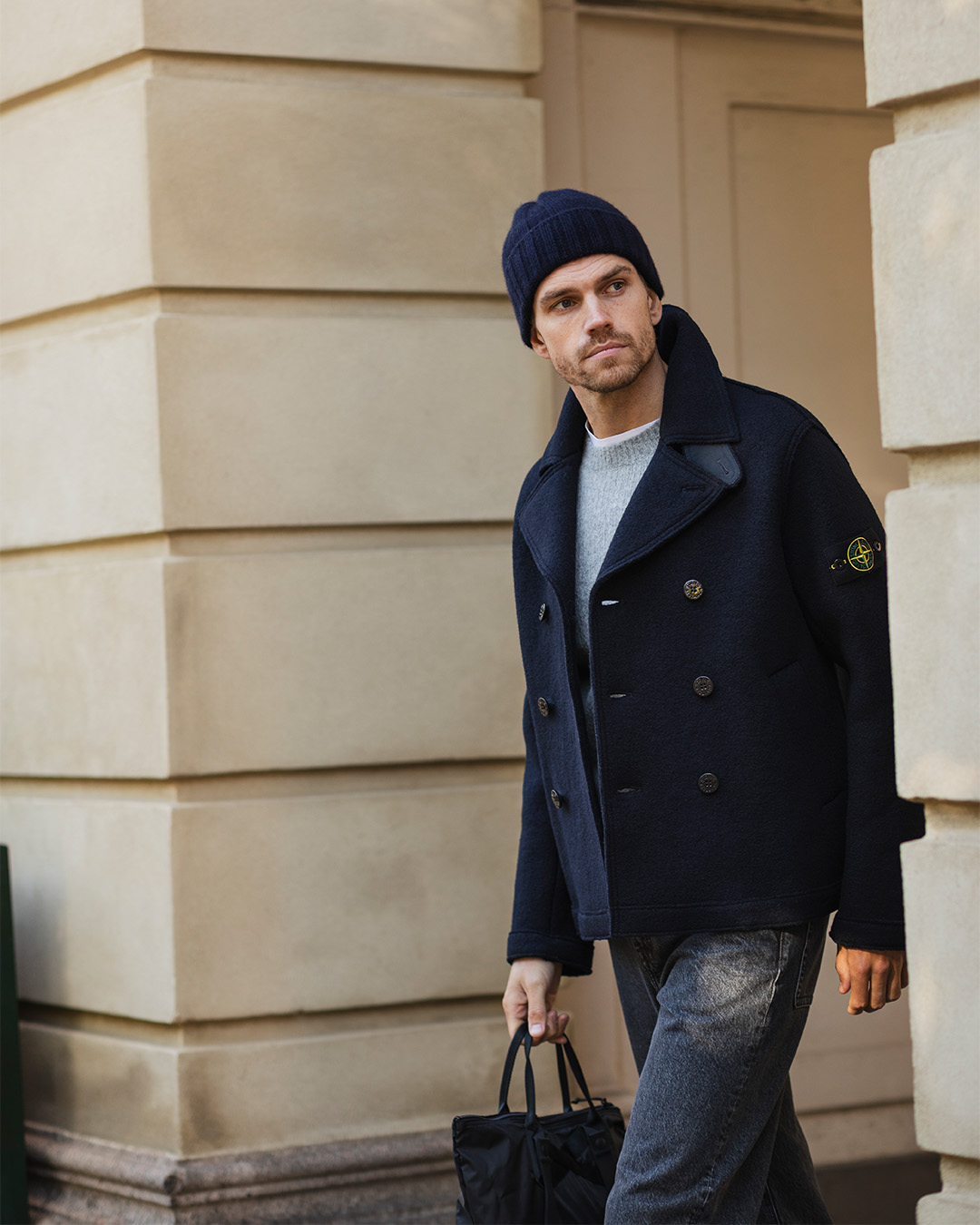
At Care of Carl, we are driven by a clear vision: to highlight clothing that conveys craftsmanship, quality, and timeless style. Garments that are not only worn but appreciated, cared for, and carried through life. We are talking about Classics of Tomorrow – clothing that endures over time, both in expression and material.
The peacoat, or sailor jacket, is one such garment. The compact wool provides warmth and structure, while the overall feel remains natural and well-balanced. The result is an outerwear piece that works just as well in everyday settings as in more dressed-up occasions – embodying a sense of both the present and heritage.
Below, we highlight five reasons why the sailor jacket continues to be an obvious choice, year after year.
1. Anchored in Maritime Heritage
The peacoat is one of the most recognizable outer garments in classic menswear.
Originally worn by crew members in the navy, its proportions and details were shaped by the conditions at sea: wind, cold, and physical labor on deck. The wide lapels and high collar could be turned up to protect the face and neck from salt spray and harsh winds. The double-breasted front kept the wind out, and the slightly shorter length allowed for freedom of movement on board – especially when sailors climbed the rigging or worked along the edges of the deck. The angled hand pockets, positioned high and close to the chest, made it possible to keep hands warm while also drawing the garment tighter around the body, while metal buttons featuring anchor motifs marked its military affiliation (a detail that still appears in several modern models).
Today, the peacoat is worn in entirely different contexts, but the heritage is still present. It is this original functionality that gives the garment its distinct expression and character. And in the midst of everyday life, as you navigate the city's streets and let your hands sink into your pockets, there is a faint echo of its maritime origins – as if the garment still carries the memory of having stood at the bow with its gaze directed towards land.
2. Balanced between a coat and a jacket
One of the strengths of the peacoat is its ability to navigate between different contexts. It shares the weight and structure of a wool coat, but its slightly shorter length and more compact silhouette provide a more agile and relaxed expression. With its double-breasted front and generous lapels, along with the somewhat shorter length, it places you in the gray area between a jacket and a coat – and it is precisely there that its broad versatility emerges. The result is an outerwear piece that doesn’t have to choose a side: it doesn’t feel too dressed up when worn with denim and knitwear, nor too casual when placed over a shirt and blazer. It is this midpoint, where the formal and the informal meet, that makes the sailor jacket so useful. It can accompany you throughout the day without changing its character.
3. The compact wool fabric provides warmth and structure
The classic peacoat is almost always made from a compact and dense wool quality. Historically, Kersey wool was used in the navy – a tightly woven and slightly glossy fabric developed to withstand wind and moisture at sea. Today, Melton wool more often dominates, a felted and compressed wool fabric that offers weight, warmth, and a shape that remains stable. Both qualities share the same characteristic: they provide warmth without the need for extra linings or technical membranes. Unlike softer wool qualities, this type of wool retains its structure over time, contributing to a silhouette that feels defined and cohesive.4. Wide Style Range: From Preppy to Tailored
Despite its clear structural framework, the skipper jacket is a garment that works across multiple style expressions. Its shorter length frames and provides proportion to the overall look, rather than dominating, making it easy to integrate into various wardrobes. In a preppy-influenced style, it pairs naturally with a cable-knit sweater, oxford shirt, and chinos, while in a more robust heritage expression, it combines with raw denim, boots, and flannel. For a modern and more minimalist wardrobe, it is worn over straight wool trousers and a thin merino knit sweater, allowing the proportions to speak for themselves. In a tailored context, it replaces the coat over a blazer or suit – without coming off as either too formal or too casual. The shape remains consistent, and it is precisely this that gives the skipper jacket its stylistic breadth.
5. An Investment That Withstands Trends
The classic sailor's jacket is not significantly affected by trends – and that's precisely why it stands the test of time. Sure, fashion houses interpret the model in various ways and adjust details, but the foundation has looked the same since it was worn by sailors in the 1800s. This means that the garment does not risk being perceived as dated or tied to a specific period. In a well-made model of compact wool, the sailor's jacket retains both form and function with repeated use, and over time it develops a softness and weight that deepens its expression. With the right care, it follows the wearer through many seasons – a clear example of Classics of Tomorrow.
Investing in peacoat is not just about choosing an outer garment. It is about selecting a form and a function that has proven to be timeless through generations. A piece that has not needed to conform to trends, but has been thoughtfully designed from the start – where heritage, function, and expression come together in a whole that stands on its own.












